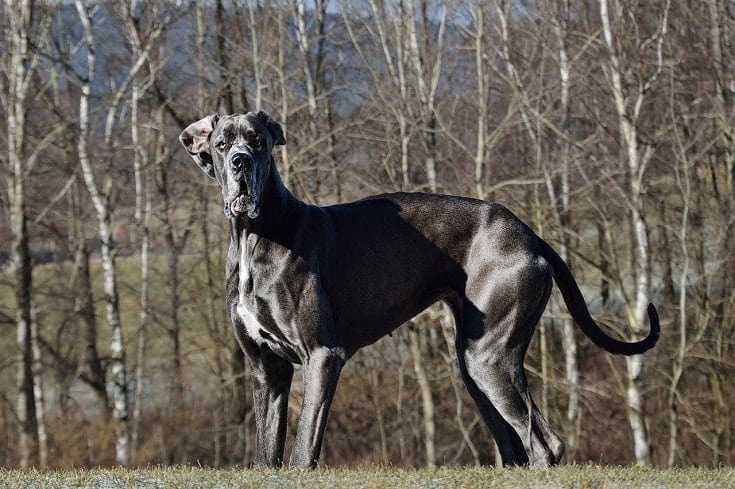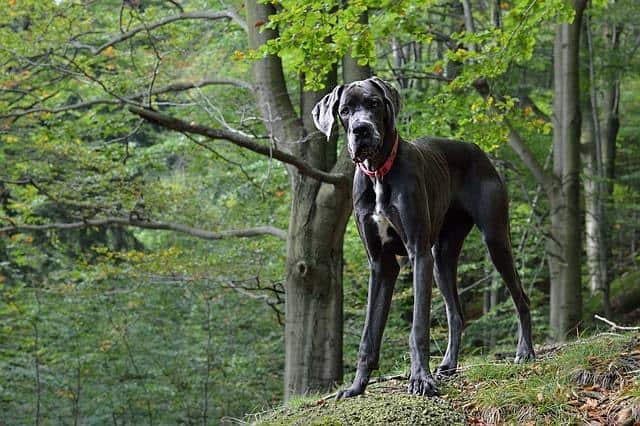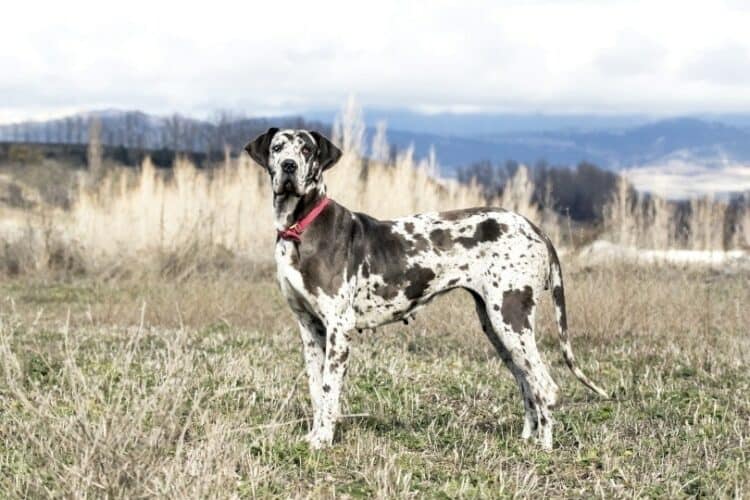While no dog is completely hypoallergenic, Great Danes don’t belong to that category because they shed. However, since they have short hair and a single coat, they do shed less than long-haired, double-coated dogs such as the Golden Retriever. If you plan accordingly, moderate allergy sufferers should still be able to care for this breed. Continue reading to learn more.
What Makes a Dog Hypoallergenic?
Did you know that a 100% hypoallergenic dog actually doesn’t exist? Most people are allergic to pet dander and saliva, not a dog’s fur itself, so even a hairless dog still produces allergens. So, is the hypoallergenic label a complete scam? Not exactly. While no dog is completely without dander, some spread it around less than others. Non-shedding dogs are considered hypoallergenic because fur is a transport vehicle for dander and saliva to travel all over your house. You should have considerably lower allergic reactions to a hypoallergenic dog because they simply aren’t going to shed that dander all over you and your furniture.
Keep in mind that no dog is 100% allergen-free, so if you suffer severe reactions, a dog probably isn’t the pet for you. If you’re concerned about how well you’ll fare, see if you can have a trial period with the particular dog you’re interested in adopting before you commit.

Tips for Living With Allergies With a Great Dane
If you have your heart set on a Great Dane, don’t despair. If you have mild to moderate allergies, there are ways to mediate allergic reactions that might still make it possible to own one of these majestic creatures.
Thankfully, the year-round allergy prognosis is fair. Great Danes shed a moderate amount all the time, but typically less than double-coated shedding dogs such as the German Shepherd who must lose an entire undercoat every spring and fall. Great Danes also lose the most amount of hair in the spring and the fall, but it’s not as much because they only have one layer of fur. Here are some tips for coping with your allergies while living with a Great Dane.
1. Recruit another family member to help with the grooming.
Since dander and saliva spread through fur, see if someone in your family will brush and bathe Fido instead of you. Bathing your dog frequently will also help control the allergens but be careful not to bathe them more than once a week or you might dry out their skin and coat.
2. Vacuum instead of sweep when you can.
Sweeping can stir up dust and dander and cause an allergy flare up. Try vacuuming and using a moistened rag when you dust to avoid spreading the dander through the air.
3. Wash pet bedding frequently.
Try to wash your pet’s blankets once a week or at least every time they get a bath.
4. Don’t let your Great Dane on your bed.
Avoid letting your Great Dane sleep on your linens since you pull them up to your face. If your dog must sleep with you, give them their own blanket, and be sure to wash all of the sheets at least once a week in hot water. The hot water kills dust mites which can be found in their dead skin (and yours!).
5. Try an over-the-counter allergy medicine or homeopathic remedy.
Everybody responds differently to medicine, but if you’re a chronic allergy sufferer, ask your doctor about what type of allergy medicine might be a good fit for you. Some people have also found relief from natural remedies such as ginger tea or propolis, a resin that bees make from their saliva and beeswax that’s been shown to have anti-inflammatory benefits.

Hypoallergenic Dog Breeds
Some examples of hypoallergenic dog breeds include:
- Bichon Frise. This dog has fluffy, white hair and an outstanding personality.
- Chinese Crested. Hairless except for around the head and paws, the Chinese Crested has a gray, pink, and white spotted body and is around the size of a Chihuahua.
- Maltese. This small dog is often portrayed as white, but it comes in coats of many colors and weighs between 10-12 lbs. The Maltese traditionally grows a long “beard”, and its fur often trails the floor when groomed for show.
- Poodle. Extremely bourgeois and intelligent, the poodle has tight curly hair that doesn’t shed but will require extensive grooming. Many poodle mixes such as Cockapoos, Cavapoos, and Goldendoodles are also considered hypoallergenic, even when they’re mixed with breeds that shed.
- Schnauzers. This breed comes in several different sizes, but all feature a stocky body with long legs. A traditional Schnauzer groom leaves a long “beard” on the face, moderate hair on the legs, and a nearly shaven appearance on their torso.
Final Thoughts
Great Danes aren’t considered hypoallergenic but living with one should be bearable as long as you have only mild to moderate symptoms and take appropriate steps to mediate the allergen. If your allergies are more troublesome, you might want to consider a hypoallergenic dog. Just remember no dog is completely allergen-free and if you have a severe reaction then a dog might not be the right kind of pet for you.
Featured Image Credit: David Pegzlz, Shutterstock














